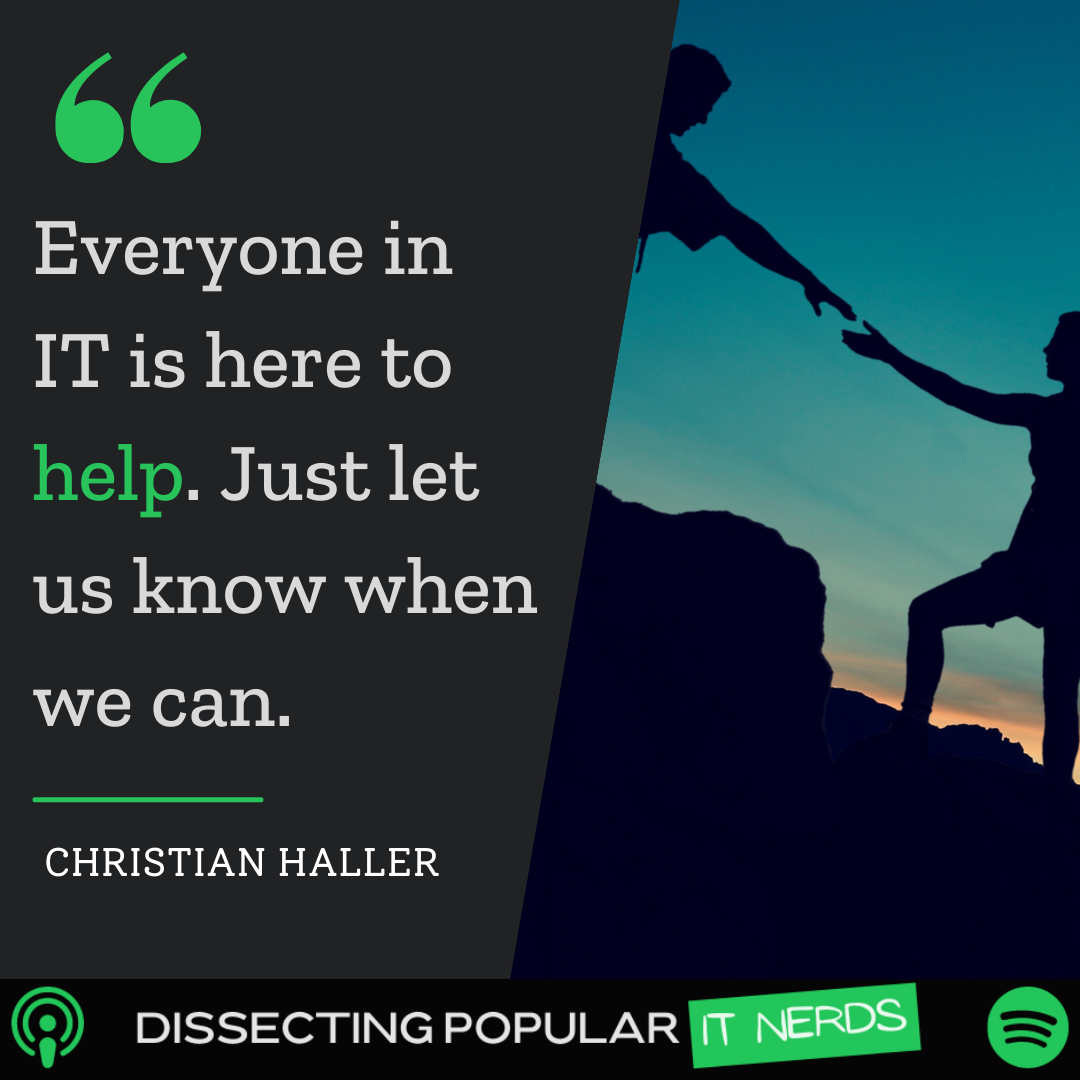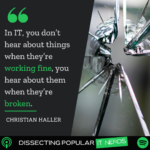[02:39] What are Diamond C Trailers?
We’re a trailer manufacturer for commercial trailers of all kinds. Car haulers, dump trailers, etc. All of them are custom-built. You can specify exactly what you want when you go to your dealer.
[03:40] What were you most surprised about when jumping into this position?
The lengths they will go to for customer service. The skill of the crew is to be able to build things from muscle memory just by looking at a piece of paper. It’s a big family atmosphere.
[04:28] How does the order process work for customers?
There’s a trailer configurator on our website and that input flows through our ERP down to the shop.
[05:13] Are you involved in the infrastructure of that?
Yes, I deal with infrastructure, support, and training currently. We just had a huge server overhaul not too long ago. There is a lot of data.
[07:08] Do you guys have a customer service team dedicated to order maintenance/changes/tweaks?
We have an engineering team too. If an option isn’t on the list for a customer, they can usually figure out a way to make it for them.
[07:45] Looking at your background, it looks like you began your career as a network tech.
It wasn’t a traditional career path for IT. I initially studied architectural technology and construction management at school, and did a work internship for Delphi. Then I graduated and the housing marketing crashed, so I ended up applying at Michigan Sugar Company. It just worked and I was there for 11 years. It was IT and construction management mixed; no day was the same and I like to see projects through from beginning to end.
[09:30] Could you give us an example of the kind of projects you work on at Diamond C and the kind of issues you deal with?
We are trying to lead the growth curve a little. We’ve had year-over-year growth, so we have to keep that up and continue leading the curve. A lot of projects are looking at SAS applications and scalability.
[12:18] Are you constantly customizing your ERP to keep up?
We launched it not too long ago; it’s about a year in. We’re still making sure every department has what they need. There’s a lot of tweaking and updating constantly.
[13:45] I’m sure the manufacturing side of things isn’t the only thing your ERP deals with. Is there a ticketing and support system?
We have our ticketing system. We don’t want one thing running everything, so there’s a lot of tying software together and making it run smoothly.
[14:48] You started at Diamond C as Information Manager. What was that role?
Being ready for the ERP launch and training staff to use it. Infrastructure and IT merged, and I moved over to that to help with support.
[16:30] Are you relieved to have all those elements in your wheelhouse?
Having it all there is a great way to grow the team. Our support and training techs are fluid at doing both now. They know how to do it and teach it.
[18:15] How do you plan for long-term resiliency when there’s an event, whether it’s a pandemic or natural disaster? And how do you communicate with Executives?
Focus on key systems and departments, and how fast they need to be up and running. That’s driven by executive leadership. Cloud-based, off-site replications, transit backups. You need redundancy because you never know what can hit.
[21:15] Do you work with the business teams to identify what is important? And how do you do that?
You have to know the teams and departments. I don’t book a lot of meetings I prefer to just have a natural relationship. Just doing walk-ups. That way you can pick up on what is and isn’t working.
[30:00] How do you create SLAs?
We learn from our mistakes. We set them up, then once feedback rolls, in we tweak them to work better for the team.
[34:50] How do you keep response time down?
Cross-training, job shadowing, and continuing education.
[38:50] Tell us about some challenges you’ve encountered in your career.
Not knowing the whole picture. Companies dragging their feet on adoption.
[43:30] How do you assess risks and communicate that to the execs?
There’s an open-door policy here, so it’s easy to bring things to the table.



